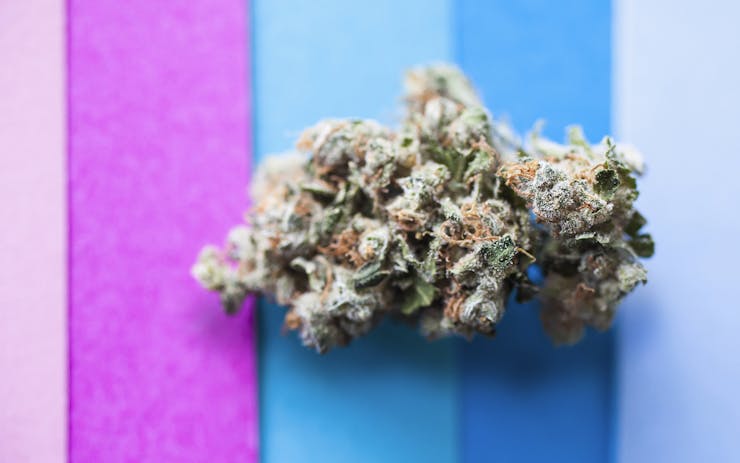Last year, my father was diagnosed with cancer that caused severe visceral pain. We knew weed could help. What we didn’t know was how much to give him. The months that followed were shaped by trial and error—sometimes we nailed it, and he experienced a few lucid, pain-free hours of relief, and other times, we got it horribly wrong, leaving him lethargic or anxious and confused. The experience crystallized the need for a safe baseline from which we could determine the correct THC dose for him.
As the demand for cannabis soars, so too does the need for clear guidelines governing its use. Cannabis is potent medicine, and as a medicine, requires a framework that minimizes harm. Standardized dosing may be the cornerstone of such a framework.
At present, the therapeutic cannabis landscape is characterized by inconsistency. There are states with varying levels of medical cannabis programs and other states with none; doctors who are well-versed in the specificities of medical marijuana, and doctors who are unaware of the existence of the endocannabinoid system.
There’s also clinical research that details the efficacy of cannabis in treating specific ailments, but with sweeping differences in the doses of THC or CBD that have been administered. Deducing what constitutes a standard dose can be tricky, to say the least.
For a long time, the recommended adage for those experimenting with cannabis medicine has been to “start low, go slow.” A shift is afoot, however, with calls for standardized THC units for both research and clinical purposes.
Why a standard dose is needed for cannabis
While there’s an impressively diverse array of cannabis products and administration methods available today—edibles, vapes, flower, concentrates—each often has varying concentrations of THC. A 2019 article published in Addiction affirms the need for standard units of THC, particularly across distinct administration methods.
Standardizing dosage promotes safer patterns of use. It’s not a novel proposal. Motions to standardize cannabis dosing have been floated before: measuring cannabis in grams, for example, or having standard joints. Problematically, neither accurately captures the differing concentrations of THC that may be present in products—a joint, blunt, dab, and edible all have different amounts of THC, as do different strains of flower.
To overcome this shortfall, the above study’s authors proposed a 5 mg standard THC unit for all cannabis products, across all methods of administration. Such an approach echoes the way consumers have been taught to understand alcohol.
A 5 mg dose can deliver meaningful effects regardless of the route of administration while minimizing the risk of unpleasant or excessive effects for newbie consumers. Standard dosing guidelines will also help consumers to determine the number of standard doses in each product.
Research already suggests that labels listing the number of doses in a product are more effective in conveying information than those listing THC in milligrams alone.
Standardized dosing for research purposes
The National Institute on Drug Abuse’s (NIDA) Cannabis Policy Workgroup has identified the development of standardized units of a dose as one of its top research priorities. According to NIDA representatives Nora Volkow and Susan Weiss, “A standardized measure for THC content in cannabis products is necessary to advance research both on the adverse effects of cannabis and on the drug’s potential medical uses.”
Standardizing THC units may offer greater clarity into understanding current inconsistencies in cannabis research, especially regarding its influence on brain development, cannabis use disorders, addiction, and psychoses.
According to Volkow and Weiss, current and past studies exploring the effects of cannabis on the brain development and cognition of children and adolescents often exclude relevant details about the THC content of the products consumed.
While some research points to adverse events after a single exposure to cannabis, other studies show no differences with regular exposure. A lack of information about THC content may contribute to discrepancies in research outcomes. Case in point: Many meta-analyses or systematic reviews of cannabis medicine often report conflicting findings.
Why’s it so critical to get THC dosing right?
Today’s weed isn’t what it used to be. It’s no secret that THC concentration has been elevating steadily since the ‘70s, rendering cannabis more intoxicating than ever before.
Although increasing numbers of discerning consumers are searching for an experience that doesn’t leave them curled up in a ball unable to move, THC-rich strains are still ubiquitous. The University of Mississippi collected 18,108 samples over a decade with the support of NIDA, finding that the mean concentration of cannabis increased from 8.9% in 2008, to 17.1% in 2017, and several European countries documented increased levels as well. Increased THC potency has been linked to addiction and has also been associated with greater adverse effects.
What’s more, THC enacts opposing outcomes at different doses, a phenomenon known as bidirectional effects. For example, research has shown that high doses of THC can increase depression, anxiety, and confusion, while lower doses can conversely reduce distress, anxiety, and perceptions of stress.
Similar effects have been noted with THC and nausea. Small doses can ease symptoms, but chronic high doses can cause a condition called cannabinoid hyperemesis syndrome, provoking intense bouts of vomiting and crippling abdominal pain. Enjoying the benefits cannabis has to offer hinges on getting the dosage right.
An expert weighs in on standardized dosing
According to Dr. Jordan Tishler, a cannabis medicine expert at Green Flower Media and Instructor of Medicine at Harvard Medical School, a 5 mg unit dose is ideal for both research and clinical situations.
“Most medicines have a starting dose or unit dose, and then they are used in multiples of that dose as needed,” explained Tishler. “A conventional medication might come in 5 mg, 10 mg, 20 mg, and 40 mg tablets, for example. This is based on research that defined the unit dose initially and then showed that the unit dose was correct and that multiples, up to a point, had increasing effectiveness.”
Tishler affirms that in his clinical experience, 5 mg represents an appropriate baseline. “However, a fixed unit dose does not mean that that will be the only dose available, or that patients must be constrained to only that dose. It is a way of standardizing research or clinical use so that results can be predictable and reliable,” he pointed out.
Tishler concurs that a standardized unit dose will work across all delivery methods. But how does that work for vaping or smoking? How do you ensure that you get a 5 mg dose when you’re inhaling?
“In my practice, I sometimes prescribe cannabis use by inhalation—vaporization of flower only, no smoking or oil pens,” said Tishler. “In this case, which is the most difficult to regulate, you can simply use a specific level of THC in the flower, 15-20%, and the methodology of taking a puff—a slow, full breath in—to get a unit dose that’s fairly reliably 5 mg.”
Tishler doesn’t see any drawbacks associated with a move to standardize dosing for research purposes, either. “It’s not all that often that I agree with NIDA, but this standardization is exactly what we need now to promote research and have more widely applicable results.”
Standardizing doses of other cannabinoids
Standardizing THC units may also enhance our understanding of the effects of other cannabinoids. “If the THC level is a constant, then we’re better able to discern what the effects of the medication that are not THC-related may be,” pointed out Tishler. “Ultimately, as those other cannabinoids are better understood, they too will need to be standardized.”
The 2019 Addiction study hinted that standardized CBD doses may also be recommended in the future. With the current demand for CBD, evaluating its health impacts and providing a standardized dose makes sense.
What’s more, CBD has been shown to mitigate some of the harms associated with THC, without detrimentally impacting its desirable traits. A standardized CBD dose could feasibly render higher doses of THC more user-friendly and predictable. And who doesn’t like a little more predictability in these uncertain times?





